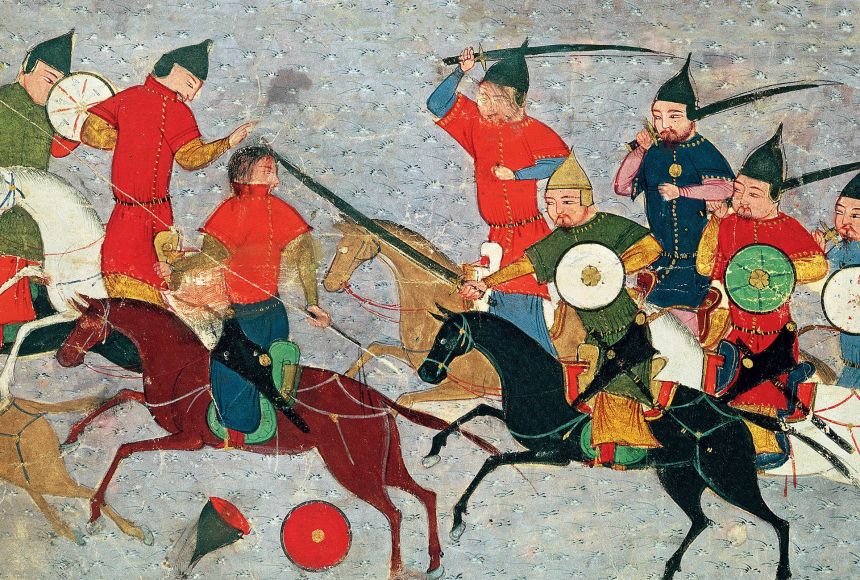Throughout the world's history, conquerors have taken over new lands and built empires. Their influences often live on long past their death, and can even change the course of history.
Over the history of the world, lands have changed hands many times. Often, the world's most significant changes happen when a powerful leader emerges. Once the leader has an army, they take over the land around them through the use of or the threat of violence, forming an empire. The leader's descendants may continue to gather territory or lose the land to another conqueror.
A few examples from ancient history show the powerful effects of different conquerors on the history of the world.
Alexander
Alexander—sometimes called Alexander the Great—was born more than 2,300 years ago in 356 B.C.E. to King Philip II of Macedonia, a kingdom in part of northern Greece. After his father died, Alexander became king at age 20. Alexander quickly expanded his kingdom, applying his military ability and political skills. By the time he died at the age of 32, Alexander had conquered a huge empire that extended from Macedonia to Egypt and from Greece to part of India. It was the largest empire in the ancient world.
Alexander was keen to learn everything he could. He hired scientists to travel with the army. They recorded information about the plants, animals, and geography of his new territories. Alexander encouraged his people to live among and marry the people they conquered to create a unified empire. He also founded cities, often named Alexandria, as centers of Greek government and learning. The most famous was Alexandria, Egypt, which would continue as a center of learning long after his death and is still a thriving city today.
Alexander the Great's conquests spread Greek culture, language, and ideas throughout Asia Minor (made mostly of modern-day Turkey), Egypt, and India. Greek culture became entwined with local cultures. Historians have named the time period the Hellenistic Age or Period. It began after Alexander's death in 323 B.C.E.
Hellenistic culture grew and evolved in the kingdoms, and great artworks and famous libraries were built. Academic advances were made by philosophers and scientists. The Hellenistic Period came to an end when Roman troops captured the last of Alexander's empire at the Battle of Actium in 31 B.C.E.
The Norman Conquest
In 1066, King Edward of England died without an heir. His brother-in-law Harold assumed the throne. William, the duke of Normandy in France, believed he had a better claim to the throne. He gathered an army and launched an attack on England. Harold was killed at the Battle of Hastings, and William was crowned the new king. Six hundred years of Anglo-Saxon rule ended. Today, this event is remembered as the Norman Conquest.
The Norman Conquest changed England a great deal. William kept careful records of the land and its resources in the Domesday Book so he could tax his subjects more effectively. He also took land from wealthy English people. He gave the land to Norman nobles who pledged their allegiance to him. Finally, William formed the Great Council, a group of nobles and church leaders who helped him make decisions. The Great Council would eventually evolve into what is now known as the British Parliament.
The Norman Conquest also influenced culture and architecture. Normans built castles and soaring cathedrals in England. French became the language most commonly used in legal and administrative circles. Even today, the motto on the British Coat of Arms is not in English, but French.
The Mongol Empire
In 1206, the Mongol Empire emerged in Asia. At its peak in the 1300s, the Mongol Empire stretched from China to Eastern Europe. The kingdom was the largest connected empire in world history.
Some of the effects of the Mongol conquests were felt for hundreds of years. They destroyed irrigation systems in present-day Iraq and Iran, ruining the area's agricultural system. The loss increased fighting in the region.
However, the most lasting result of the Mongol Empire was the peace that resulted from Mongol rule. The Silk Road, a network of trade routes extending across Asia and into Europe, were under Mongol control. Knowledge moved freely between the Far East, the Middle East, and Europe, leading to scientific advances. Chinese inventions and ideas spread to Europe, and European goods and ideas flowed to the Far East.
Unfortunately, with these exchanges came the spread of diseases. Research suggests the Mongols carried the plague, known in history as the Black Death. The deadly illness migrated from Asia to Europe. In Europe, the disease killed upwards of 25 million people.
